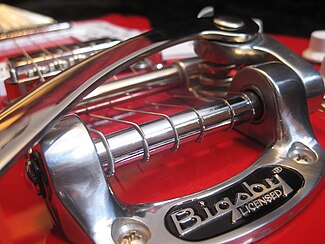
An electric guitar is a guitar that requires external amplification in order to be heard at typical performance volumes. Unlike a standard acoustic guitar. it uses one or more pickups to convert the vibration of its strings into electrical signals, which ultimately are reproduced as sound by loudspeakers. The sound is sometimes shaped or electronically altered to achieve different timbres or tonal qualities from that of an acoustic guitar via amplifier settings or knobs on the guitar. Often, this is done through the use of effects such as reverb, distortion and "overdrive"; the latter is considered to be a key element of electric blues guitar music and jazz, rock and heavy-metal guitar-playing. Designs also exist combining attributes of the electric and acoustic guitars: the semi-acoustic and acoustic-electric guitars.
The Fender Stratocaster, colloquially known as the Strat, is a model of electric guitar designed between 1952 and 1954 by Leo Fender, Bill Carson, George Fullerton, and Freddie Tavares. The Fender Musical Instruments Corporation has continuously manufactured the Stratocaster since 1954. It is a double-cutaway guitar, with an extended top "horn" shape for balance. "Stratocaster" and "Strat" are trademark terms belonging to Fender. Guitars that duplicate the Stratocaster by other manufacturers are sometimes called S-Type or ST-type guitars. Many prominent rock musicians have been associated with the Stratocaster for use in studio recording and live performances, most notably Eric Clapton, Buddy Holly, David Gilmour, Mark Knopfler, Jimi Hendrix, Stevie Ray Vaughan, John Frusciante, Jeff Beck and George Harrison.

The Gibson ES-335 is a semi-hollow body semi-acoustic guitar introduced by the Gibson Guitar Corporation as part of its ES series in 1958. It features a solid maple wood block running through the center of its body with upper bouts that are hollow and two violin-style f-holes cut into the top over the hollow chambers. Since its release, Gibson has released numerous variations of and other models based on the design of the ES-335.
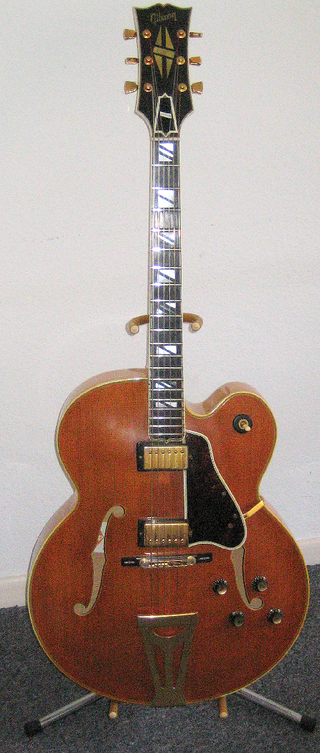
An archtop guitar is a hollow acoustic or semi-acoustic guitar with a full body and a distinctive arched top, whose sound is particularly popular with jazz, blues, and rockabilly players.
A vibrato system on a guitar is a mechanical device used to temporarily change the pitch of the strings. It adds vibrato to the sound by changing the tension of the strings, typically at the bridge or tailpiece of an electric guitar using a controlling lever, which is alternately referred to as a whammy bar, vibrato bar, or tremolo arm. The lever enables the player to quickly and temporarily vary the tension and sometimes length of the strings, changing the pitch to create a vibrato, portamento, or pitch bend effect. Instruments without a vibrato have other bridge and tailpiece systems.
Paul Adelburt Bigsby (1899–1968) was an American inventor, designer, and pioneer of the solid body electric guitar. Bigsby is best known for designing the Bigsby vibrato tailpiece and proprietor of Bigsby Electric Guitars.
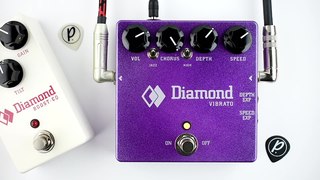
A vibrato unit is an electronic effects unit used to add vibrato to the sound of an electric instrument, most often an electric guitar. Vibrato units may be individual stomp boxes or built into multi-effects units, but are traditionally built into guitar amplifiers. Vibrato units are particularly used in surf music.
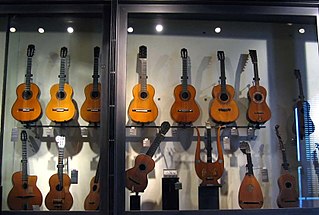
The following outline is provided as an overview of and topical guide to guitars:

A B-Bender is a guitar accessory that enables a player to fluidly alter the pitch of a guitar's B-string. This works by mechanically bending the B-string through the use of a series of levers and/or pulleys attached to an external lever that is controlled by the player.

Old Black is the nickname given to Neil Young's primary electric guitar. Most of Young's electric guitar work has been recorded using this instrument. Though he has used a variety of different instruments, this Les Paul has remained ubiquitous and an obvious favorite. Young acquired Old Black in early 1968 in a trade with then Buffalo Springfield bassist, arranger and engineer Jim Messina.
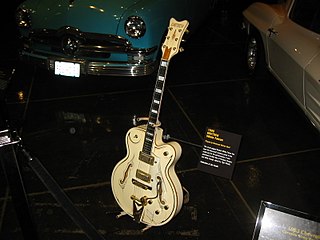
The Gretsch White Falcon is an electric hollow-body guitar introduced in 1954 by Gretsch.
Electric guitar design is a type of industrial design where the looks and efficiency of the shape as well as the acoustical aspects of the guitar are important factors. In the past many guitars have been designed with various odd shapes as well as very practical and convenient solutions to improve the usability of the object.
The Gibson ES series of semi-acoustic guitars are manufactured by the Gibson Guitar Corporation.

The Stetsbar Tremolo system is a vibrato bridge system for the electric guitar. Eric Stets developed the device in the late ‘80s, and patented it in 1995. He originally designed the device to provide a stable vibrato system that could retrofit to “stop-tail” guitars such as the Gibson Les Paul with no permanent modifications to the instrument.

Doc Kauffman was a lap steel guitar, electric guitar engineer, inventor and pioneer of the world's first patented guitar vibrato system. The patent for "Apparatus for producing tremolo effects" was applied for in 1928 and officially granted to Doc Kauffman on January 5, 1932.

A stoptail bridge used on a solid body electric guitar or archtop guitar is a specialized kind of fixed hard-tail bridge. Hard-tail bridged guitars use different bridges from those guitars fitted with vibrato systems.
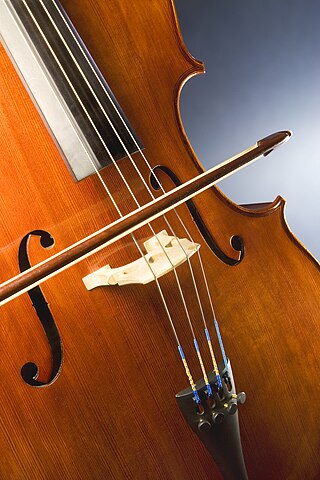
A bridge is a device that supports the strings on a stringed musical instrument and transmits the vibration of those strings to another structural component of the instrument—typically a soundboard, such as the top of a guitar or violin—which transfers the sound to the surrounding air. Depending on the instrument, the bridge may be made of carved wood, metal or other materials. The bridge supports the strings and holds them over the body of the instrument under tension.
The Gretsch G6131, popularly known as the Gretsch Jet Firebird, is an electric guitar made by Gretsch. The most popular use of this guitar is by late AC/DC rhythm guitarist Malcolm Young and Crowded House lead singer and Split Enz co-frontman Neil Finn.
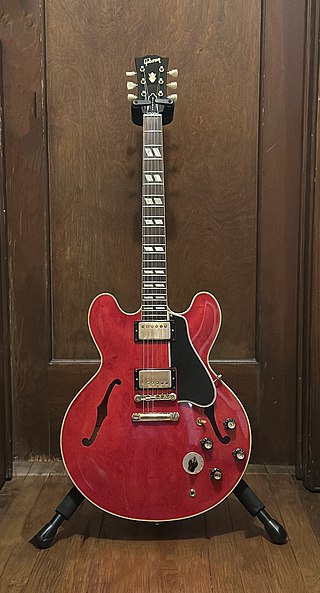
The Gibson ES-345 is a guitar manufactured by the Gibson Guitar Company. The guitar was produced from 1959 to 1981. It was designed as a jazz guitar and an upscale version of the ES-335.

Bigsby is a brand of guitars and guitar accessories that operated as an independent company by Paul Bigsby until 1966 when it was purchased by ex-Gibson executive Ted McCarty. In 1999, the brand was acquired by Gretsch from McCarty, which owned it until 2019, when Bigsby was sold to Fender Musical Instruments Corporation.
